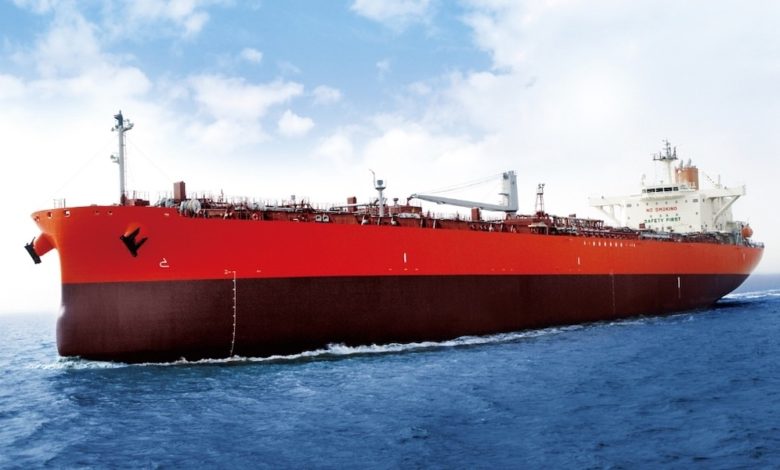Product tanker rates soar to heights not seen since the start of the pandemic
The product tanker market is looking healthier with each week that passes, with all segments firming up to levels last seen in early 2020, backed by increased geopolitical uncertainty, low reserves and increased demand.

Rates across multiple trade routes, especially Asia-Pacific, have reached new highs, with owners of modern LR1s and LR2s banking over $50,000 and $60,000 per day, respectively, while the MR segment is also earning spot rates in the $60,000 per day region, according to the latest Clarksons data.
Even hotter deals are only now coming to light with Ardmore Shipping chief executive Anthony Gurnee telling delegates at Marine Money’s event in New York yesterday that he has fixed some of his product tankers for as much as $100,000 per day in recent weeks.
“Product tankers continue to rake in sky-high earnings, buoyed by stellar refining margins and a strong backhaul element on main routes such as the TC1 for LR2 tankers trading between the Middle East Gulf to Japan and the TC5 for LR1 tankers trading on the same route. The star performers are the MR tankers in both the Pacific and the Atlantic basins,” analysts at Norwegian broker Lorentzen & Co noted in a report on Thursday.
Global seaborne trade in clean refined products is now estimated at over 800m tonnes per year, according to Genoa-based shipbroking group Banchero Costa. Asia-Pacific accounts for over a third of global clean products exports, with China and South Korea leading the way. The US is the largest net exporter, especially towards South America and Europe, with exports also growing to Asia.
Between January and May this year, global exports of clean products reached at least 328.2m tonnes, excluding cabotage. According to Refinitiv vessel tracking, 23% of these exports were shipped from the Arabian Gulf, 18% were shipped from the EU, 12% from the US and 9% from Russia.
Demand for ships to haul fuel is expected to climb by 6% this year, underpinned by Europe, according to Anoop Singh, head of tanker research at Braemar ACM Shipbroking.
The coated product tanker fleet in the size range between 30,000 and 119,000 dwt currently numbers 3,275 trading units as of June 2022. The MR2 fleet is the largest numerically, with about 1,756 units. Banchero Costa estimated about 98 units would be delivered this year. At least 45 coated units, including 11 LR2s, were reported delivered by May 2022.
“We saw quite a few ships available on the spot market in terms of LR2s. Owner’s confidence along with the LR1 list being maxed out, just pushed rates upwards,” said shipbroker OceanEXL.
The Baltic Clean Tanker Index stands at 1732 points, up 325 points or 23% since the beginning of June, pointing to the hefty earnings of product tanker owners, who have also seen their stock prices jump in the last six months.
“With global inventories at historically low levels, export oriented refineries have increased their utilisation to meet growing demand as the global economy re-opens from covid.
“As a result, we have seen an increase in seaborne exports, ton-miles and new trade routes – driving spot rates higher and voyages longer. In the short term, refining capacity is difficult to change, product tankers remain the most efficient solution to re-allocate refined product barrels around the world,” Lars Dencker Nielsen, the commercial director of Scorpio Tankers, told Splash.
“Depleted product inventories need to be replenished with real urgency. While at the start of the year, we saw primarily short-haul trading, ton-mile has increased drastically due to wide arbitrage between global product markets,” added Gernot Ruppelt, COO of Ardmore Shipping.
Ruppelt noted that beyond some of the more obvious market drivers, easily overlooked and forgotten is also the incremental distillate demand resulting from the 2020 marine fuel switch.
“We have seen this clearly play out in the later part of 2019 and into the start of 2020. The pandemic then masked this distillate gap due to the drastic drop in global oil consumption, however, with the world now emerging from lockdowns, this issue is fully back on the table. With the redrawing of the world’s oil supply maps following the Russian invasion of Ukraine, and the flow of products needing to be re-designated and accelerated, it is likely product tanker rates will continue to remain strong,” remarked Ruppelt.
“The overall recovery in demand, along with increasing average tonne miles and very muted fleet growth points towards a continued tightening of the supply/demand balance in the product tanker market,” said Niels Rasmussen, chief shipping analyst at BIMCO, adding: “Overall, it appears that owners and operators can look forward to very strong market conditions.”


